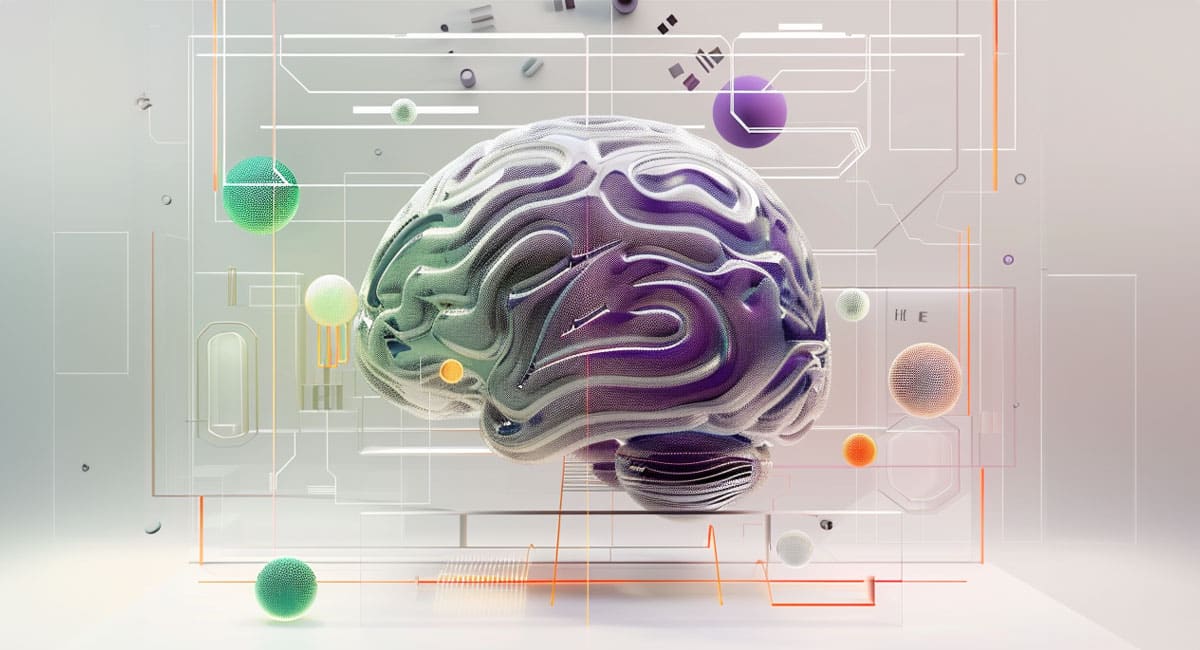Large Language Models (LLMs) rely on extensive memory to store and manipulate vast datasets, a key factor that allows them to learn from past inputs and improve their linguistic abilities over time. But what if, alongside remembering, LLMs could also benefit from adaptive forgetting?
The notion of ‘forgetting’ might seem counterproductive in the context of AI, where the capacity to retain vast swaths of information is considered paramount. But recent strides in AI research present an intriguing case for the deliberate erasure of data within LLMs. Intentional forgetting has the potential to refine learning processes, bolster flexibility, and amplify adaptability in LLMs.
These findings suggest a strategic benefit in the capacity to discard information.
Challenges in Adapting LLMs for Changing Needs
Traditional neural networks emulate the intricate structure of neurons found in the human brain, processing information through multiple layers of nodes that perform calculations and transmit processed data to subsequent layers. During training, these networks adjust their internal parameters, known as weights, in response to the input data. This continual refinement of connections bolsters the model’s ability to interpret and generate language accurately over time.
But adapting LLMs to evolving requirements presents significant challenges. Training demands substantial computational resources and source data. Adjusting an LLM to new requirements or updates can be resource-intensive and time-consuming. Moreover, restructuring or retraining an LLM from scratch is often impractical and inefficient.
The bias in data availability poses issues for LLMs when dealing with less-represented languages. Predominantly trained on data-rich languages like English or Spanish, LLMs often underperform in languages that have a smaller digital footprint. To address this disparity, there is a growing need for models that can adapt quickly to languages with less available data.
Adaptive Forgetting: A Game-Changing Technique
Mikel Artetxe is co-founder of the AI startup Reka, and an honorary researcher at the University of the Basque Country. He and his research team propose a novel concept of adaptive forgetting in LLMs. Instead of maintaining a static memory, the model periodically discards specific learned information, deliberately clearing the way for new data and insights. It challenges the traditional paradigm of continuous data accumulation, suggesting that selective memory loss can be instrumental in driving the evolution and advancement of machine learning models.
In their approach, Artetxe’s team targets the embedding layer, the initial layer that captures the foundational elements of language. By selectively erasing this critical layer, they induce the LLM to ‘forget’ the language-specific tokens it previously learned. Following this erasure, the model undergoes retraining, directed at a new language. This process repopulates the previously cleared embedding layer with a fresh set of tokens pertinent to the new language, effectively rebooting the model’s language capabilities without starting from zero.
Benefits of Adaptive Forgetting
The research spearheaded by Artetxe and his team shows that forgetting can empower language models to assimilate new languages with remarkable efficiency. By clearing the contents of the embedding layer, LLMs can shed the constraints of their previous linguistic data, creating a tabula rasa for new language acquisition.
This approach enhances the model’s ability to process and understand novel linguistic structures once the model is exposed to them. Consequently, LLMs can adapt to the subtleties and complexities of new language more rapidly due to periodic resets, suggesting a paradigm shift in how AI models could learn and evolve linguistically.
Decreasing reliance on large datasets, adaptive forgetting reduces the need for extensive corpora typically required for training LLMs, making the process more efficient. The models can be retrained or updated with significantly smaller datasets without severe drops in performance. This innovation is particularly advantageous for underrepresented languages with limited digital resources.
Adaptive forgetting equips LLMs with an agility and adaptability previously unseen in static models. Periodically resetting parts of the model simulates a form of neural plasticity, leading to a more resilient structure. This adaptability affords models the ability to pivot quickly to new tasks or datasets, bypassing the need for retraining from the ground up, thereby enabling a dynamic response to evolving linguistic demands.
Adaptive Forgetting vs. Traditional Training
Results from Artetxe et al.’s study showed that initial usage of adaptive forgetting incurred a minimal impact on performance, resulting in a slight performance decrease of only 1 point based on common language accuracy measures. This negligible reduction from 86.1 to 85.1 indicates this model retains high performance even with the introduction of forgetting.
When models were retrained with smaller datasets, adaptive forgetting sustained a significantly higher accuracy score of 62.7, compared to 53.3 for the standard model. This finding illustrates the model’s robustness and ability to maintain a better understanding of the language despite reduced training resources.
With limited computational resources, the accuracy of adaptive forgetting dropped to 57.8, whereas the standard model’s accuracy plummeted to 37.2, close to random guess levels. The stark contrast in performance under constraints showcases the model’s efficiency and its capability to perform well even in less-than-ideal training conditions.
Adaptive Forgetting Facilitates Inclusion of Underrepresented Languages
The advent of adaptive forgetting has profound real-world implications, particularly for the inclusion of underrepresented languages in AI capabilities. By equipping AI with the ability to learn and adapt to languages that have a minimal digital presence—such as Basque—this technology can extend the benefits of natural language processing to a wider audience.
Moreover, the approach serves a critical role in empowering communities by providing more equitable access to AI resources and technologies that can understand and interact in their native languages. And by promoting more linguistic diversity in AI development, this technique supports the creation of specialized AI tools tailored to specific communities, regions, or industries.
Finally, it strengthens AI adaptability, leading to applications with a wider and more impactful reach across different sectors.
Aligning AI with Human-Like Learning
The concept of adaptive forgetting in AI is poised to bridge the gap between machine learning and the natural cognitive process of abstraction and generalization seen in humans. Adaptive forgetting mirrors the human brain’s method of selective retention, where the mind naturally discards superfluous details to solidify and strengthen core knowledge.
By incorporating processes akin to human forgetting, AI researchers like Artetxe and his team are setting the stage for the creation of more intuitive AI systems. Such systems are designed to learn and respond more fluidly, akin to human intuition. This capability fundamentally boosts the AI’s proficiency in contextualizing and prioritizing information, which is critical for sophisticated and nuanced decision-making.
The methodology underpinning adaptive forgetting not only advances AI technologies but also offers a unique contribution to our understanding of cognitive science. By drawing parallels between artificial learning systems and human cognition, the research illuminates the potential for AI models to emulate human thought processes and adaptability.
Integrating Forgetting Protocols into Current AI Frameworks
Can existing AI systems adopt adaptive forgetting protocols? Are these elements compatible with the array of extant AI technologies? There is a necessity to better understand if and how adaptive forgetting can be embedded into well-established machine learning pipelines. We must ensure that the transition not only enhances learning capabilities but also integrates with the intricate workings of current AI infrastructures.
We must also strike the right balance between retaining enough memory for functionality, while ensuring adaptability to new information. Developers must create algorithms that dynamically adjust the stored memory as required by the context so that models can hold onto critical data but remain sufficiently flexible to incorporate new knowledge with efficiency.
Coping with these evolving needs will be a key part of ensuring that AI systems not only remain competent but also predictable and safe for users.
Embracing the Adaptive Forgetting Paradigm in AI
Artetxe et al.’s research on adaptive forgetting within LLMs promises a shift in the way we approach language learning and intelligence augmentation. By mimicking human cognitive processes, LLMs will not only be better equipped to handle the subtleties of human languages but also become more inclusive and efficient. Looking forward, the journey of integrating adaptive forgetting is laden with challenges, yet it’s undeniably the pathway towards creating more intuitive, robust, and versatile AI systems capable of meeting the dynamic needs of our world.
Study authors include Yihong Chenàá, Kelly Marchisioä, Roberta Raileanuá, David Ifeoluwa Adelanià, Pontus Stenetorpà, Sebastian Riedelà and Mikel Artetxe. Read the full manuscript at arXiv.




